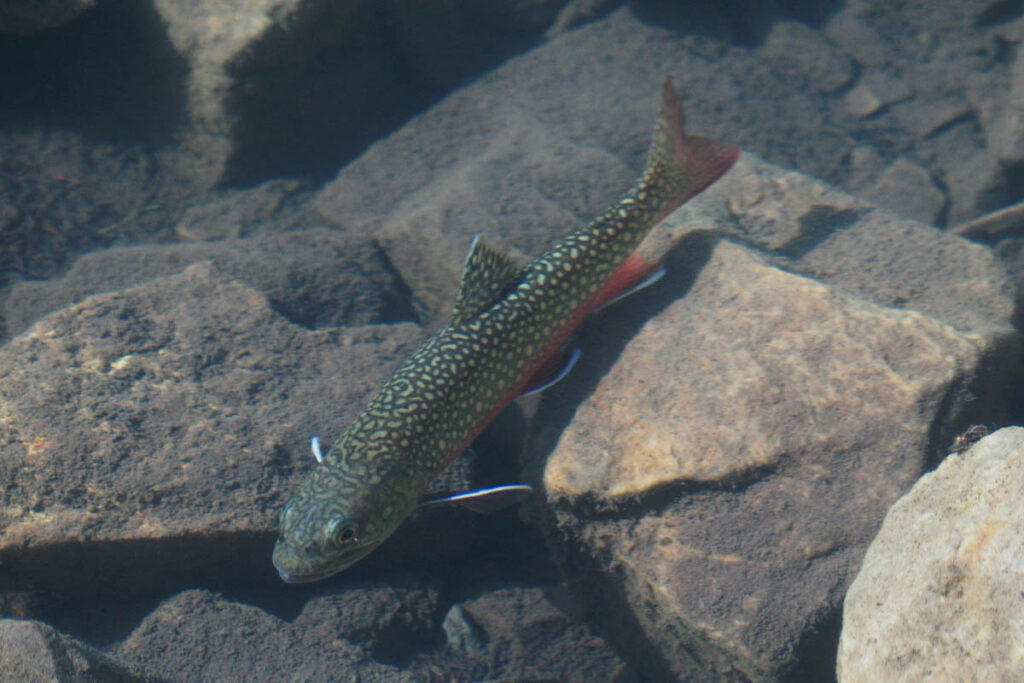Waterton Lakes National Park Lake Fish and Fishing
The lakes and rivers of Waterton Lakes National Park hold a variety of fish, most of which belong to the trout and salmon family and are classed as cold-water species—that is, they inhabit waters where the temperature ranges 4-18°C (39-64°F). The predominant species, the RAINBOW TROUT, is not native to the mountains; it was introduced from more northern Canadian watersheds as a sport fish and is now common throughout lower-elevation lakes and rivers. It has an olive-green back and a red stripe running along the center of its body.

A rainbow trout.
Only three species of trout are native to the Canadian Rockies. One of these, the BULL TROUT, is Alberta’s provincial fish. Throughout the mid-1900s, this truly native Canadian trout was perceived as a predator of more favored introduced species and was mostly removed. Today in Waterton Lakes National Park, what was once the most widespread trout east of the Continental Divide, is confined to the upper reaches of the Belly River and is classed as a threatened species. While the bull trout has adapted to the harsh conditions of its reduced habitat, its continuing struggle for survival can be attributed to many factors, including a scarcity of food and a slow reproductive cycle. Bull trout grow to 70 centimetres (27 inches) in length and weigh up to 10 kilograms (22 pounds).
The LAKE TROUT, which grows to 20 kilograms (44 pounds), is native to the Waterton Lakes. Identified by a silvery-gray body and irregular white splotches along its back, this species grows slowly, taking up to 8 years to reach maturity and living up to 25 years. Lake trout have been drawing anglers to the region since the 1880s when John George “Kootenai” Brown guided visitors to the best fishing holes.
Named for a bright red dash of colour that runs from below the mouth almost to the gills, the CUTTHROAT TROUT is native to southern Alberta’s mountain streams, but it has been introduced to high-elevation lakes and streams on both sides of the Canadian Rockies. The BROOK TROUT is a colourful fish identified by a dark-green back with pale-coloured splotches and purple-sheened sides. It is native to eastern Canada but was introduced to the mountains as early as 1903 and is now widespread throughout lakes and streams on the Alberta side of the Continental Divide, including Cameron Lake.
Regulations and Licenses
To fish in Waterton Lakes National Park, a National Park Fishing License is required. Licenses are sold at the Waterton Lakes Visitor Centre as well as local outdoor retailers. The cost is $10 for a one-day license or $35 for an annual license. The brochure Fishing Regulations Summary, available from Waterton Lakes Visitor Centre or online here, details limits and closures.
